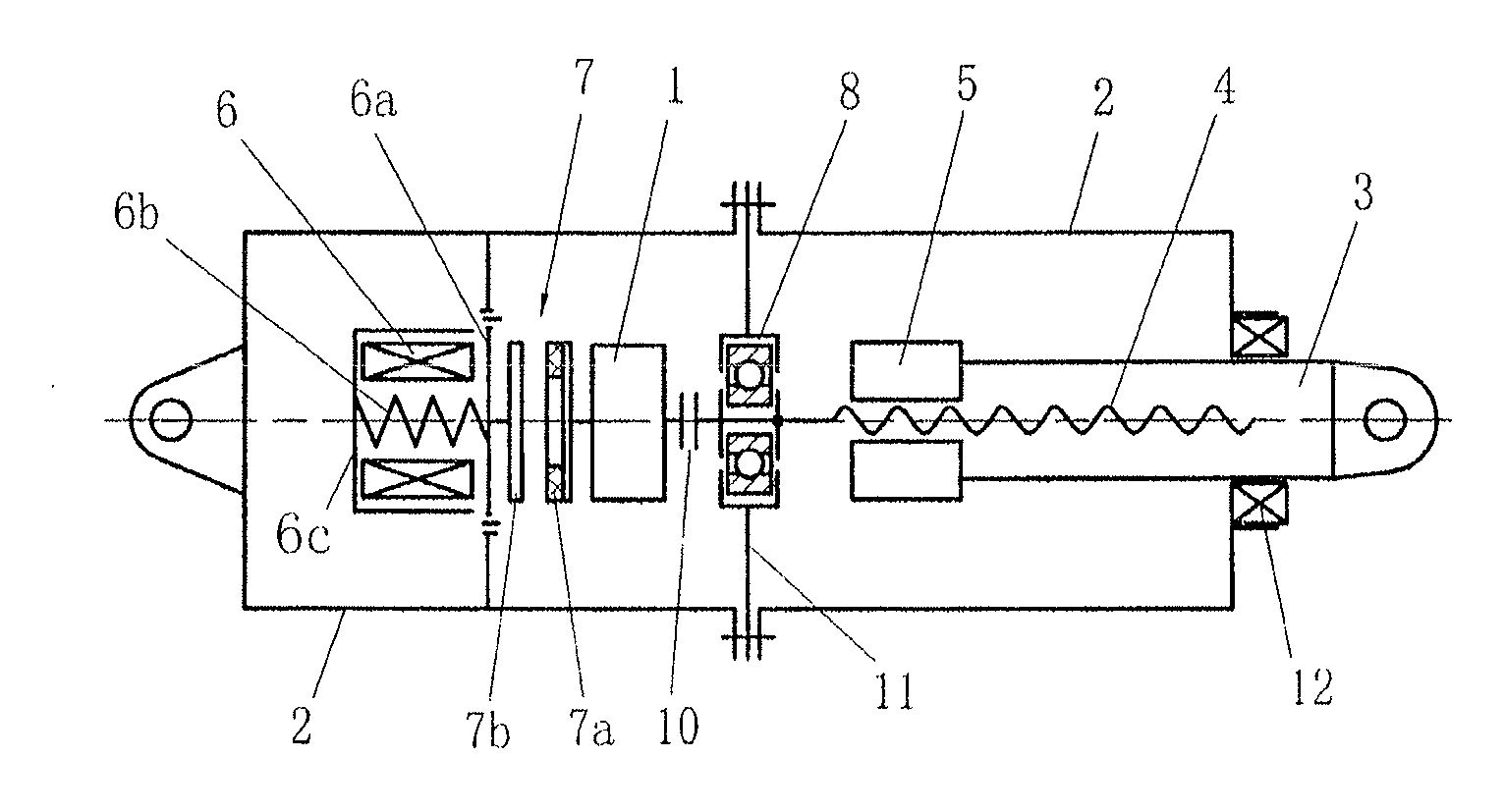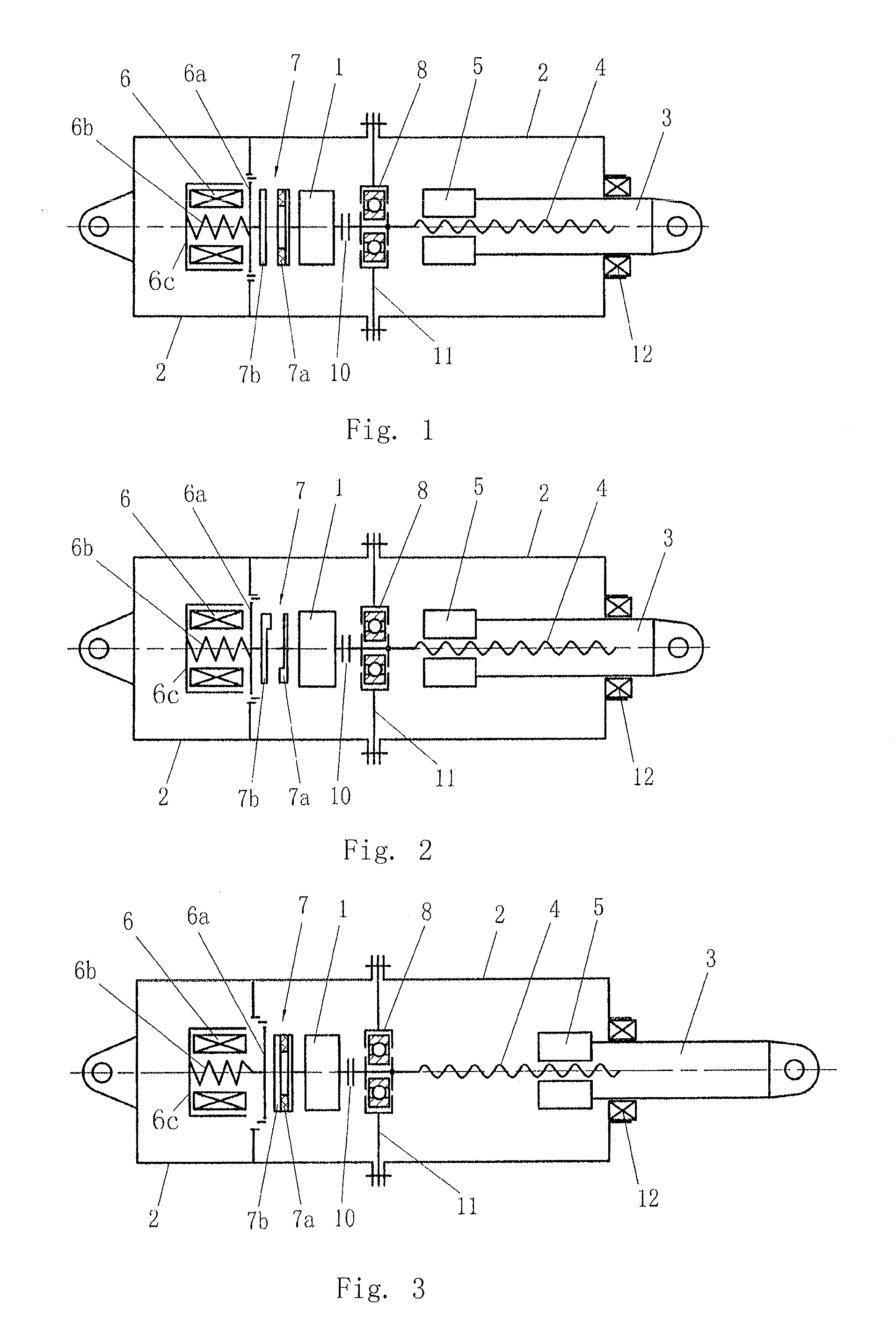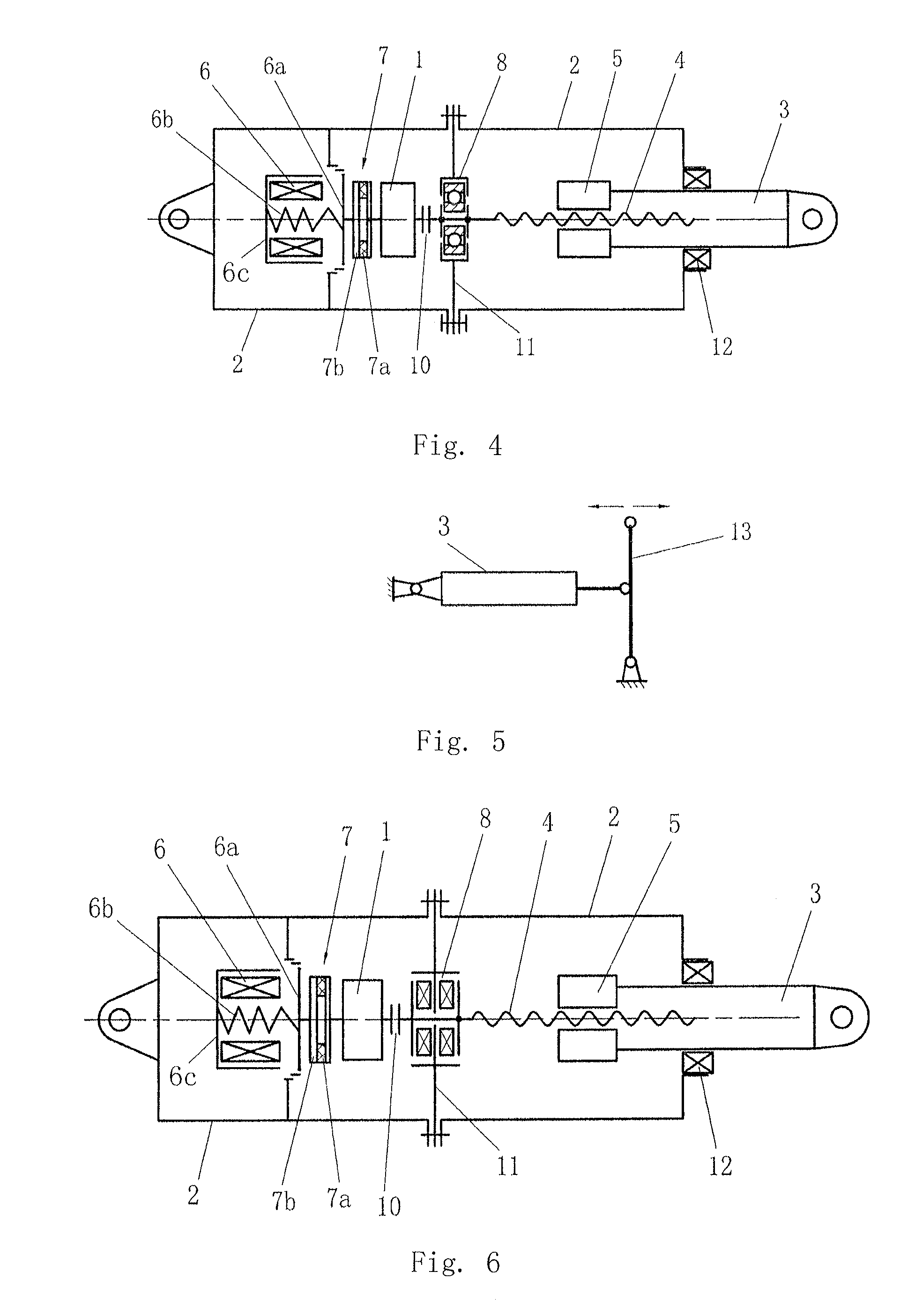Electrical push device
a push device and push technology, applied in the direction of electrical equipment, dynamo-electric machines, gearing, etc., can solve the problems of large power consumption, many malfunctions, and drawbacks of high temperature rise and many malfunctions, so as to reduce malfunctions, reduce operating temperature rise, and save power
- Summary
- Abstract
- Description
- Claims
- Application Information
AI Technical Summary
Benefits of technology
Problems solved by technology
Method used
Image
Examples
first embodiment
[0030]The first embodiment is shown in FIG. 1.
[0031]Referring to FIG. 1, according to the present invention, an electrical push device comprises a motor 1, a housing 2, an axially movable push rod 3 provided in the housing 2, a lead screw 4 provided in the push rod 3, and, a screw nut 5 provided in the inner end of the push rod 3, the screw nut 5 and the lead screw 4 constituting a screw pair. The screw nut 5 and the lead screw 4 may preferably adopt a ball lead screw and ball screw nut structure, although it is not limited to this according to the present invention, and any other suitable types of the screw pair my be adopted. The helix rise angle of the lead screw 4 which is engaged with the screw nut 5 is larger than the locking angle. The inner segment of the lead screw 4 is provided with a supporting bearing 8. The supporting bearing 8 is connected to the housing 2 through a member 11. The inner end of the lead screw 4 is connected with the shaft of the motor 1. Specifically, i...
second embodiment
[0033]The second embodiment is shown in FIG. 2.
[0034]Referring to FIG. 2, the present embodiment has a modified structure of the brake pair 7, based on the first embodiment. The translational movement brake disc 7b and the rotating brake disc 7a of the brake pair 7 shown in FIG. 1 have the annular engaging faces, however, the translational movement brake disc 7b and the rotating brake disc 7a of the brake pair 7 in the present embodiment have boss-type engaging faces, but the rest of the present embodiment is as the same as that of the first embodiment. Specifically, based on the embodiment shown in FIG. 1, a portion of the brake friction surface of the rotating brake disc 7a is provided on the translational movement brake disc 7b , so as to form a boss-type structure.
third embodiment
[0035]The third embodiment is shown in FIG. 3.
[0036]The technical solution of the present embodiment is different from that of the first embodiment in that: the initial position of the screw nut 5 on the push rod 3 is located in the outer end part of the lead screw 4. When the motor 1 is electrically driven to operate, the push rod 3 along with the screw nut 5 inwardly moves along the lead screw 4, correspondingly to draw the push rod 3 back, that is, to draw the member or mechanism connected with the push rod. When the electromagnet 6 is in an electrically driven condition, as shown in FIG. 1, the translational movement brake disc 7b and the rotating brake disc 7a are in an engagement state to maintain the push rod 3 in the state of being at the outer end part of the lead screw 4 by the brake force produced from the engagement between the translational movement brake disc 7b and the rotating brake disc 7a. The rest of the present embodiment is as the same as that of the first embod...
PUM
 Login to View More
Login to View More Abstract
Description
Claims
Application Information
 Login to View More
Login to View More - R&D
- Intellectual Property
- Life Sciences
- Materials
- Tech Scout
- Unparalleled Data Quality
- Higher Quality Content
- 60% Fewer Hallucinations
Browse by: Latest US Patents, China's latest patents, Technical Efficacy Thesaurus, Application Domain, Technology Topic, Popular Technical Reports.
© 2025 PatSnap. All rights reserved.Legal|Privacy policy|Modern Slavery Act Transparency Statement|Sitemap|About US| Contact US: help@patsnap.com



